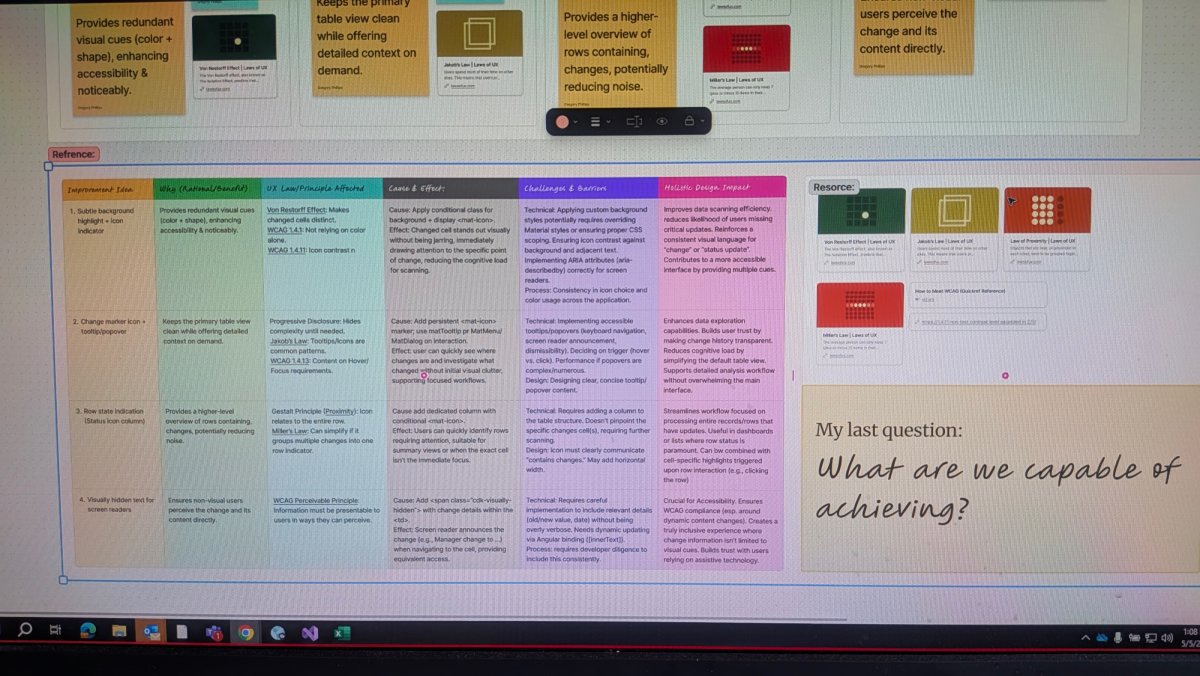Wells Fargo (Strategic UX Design Leadership)
The Challenge
My role at Wells Fargo involved pioneering a scaled human-centered design strategy, aligning a web application with the stringent WCAG 2.0+ accessibility policy, and architecting a core design system. This complex undertaking required navigating large enterprise structures, establishing compliant design practices, and fostering cross-collaboration within a highly regulated environment.

The Stewardship Model
As a Senior UX Designer, and guided by my IDEO Human-Centered Strategy and Activating Strategy certifications (December 2022), I pioneered a scaled human-centered design strategy through interactive cross-collaboration of core teams under executive leadership, showcasing contributions across the enterprise. A critical blaze marker in my journey was leading the initiative to align a key web application with Wells Fargo's WCAG 2.0+ accessibility policy and governance. This involved forging key relationships with internal Digital Accessibility groups to establish a compliant, agile-aligned design practice, embodying the Nomadic Design principle of inclusive design and shared responsibility. Leveraging my expertise in design systems, I architected a core design system in Figma founded on Angular Material, utilizing local variables to mirror production code tokens and UI atomic patterns. This directly applied the Nomadic Design principles of sustainability and resourcefulness by creating reusable, resilient components that significantly reduced future design and development effort. I also collaborated effectively with Product Management and the Agile team to deliver UX guides and high-fidelity UI mockups within three rapid sprint cycles for the Next Gen Credit Risk MVP application deployment, which was successfully released in December 2023.
The Impact
The architected design system resulted in streamlined implementation for development teams over a 12-month rollout, marking a clear and significant tangible outcome. The successful WCAG alignment ensured an inclusive and resilient digital experience, reflecting a deep commitment to human-centeredness and accessibility across the enterprise. My contributions showcased a holistic understanding of UX at scale, actively transforming corporate networks through strategic design leadership and demonstrating the profound impact of a Nomadic Design approach in large, complex organizations.
- Role(s): Senior UX Designer
- Digital Tools: Figma (for design system), Angular Material (foundation for design system).
UX Practices & Methods: Pioneered a scaled human-centered design strategy through interactive cross-collaboration, drove the initiative to align a web application with WCAG 2.0+ accessibility policy and governance, established a compliant, agile-aligned design practice, forged relationships with internal Digital Accessibility groups, architected a core design system in Figma utilizing local variables to mirror production code tokens and UI atomic patterns, and collaborated with Product Management and the Agile team to deliver UX guides and high-fidelity UI mockups.





